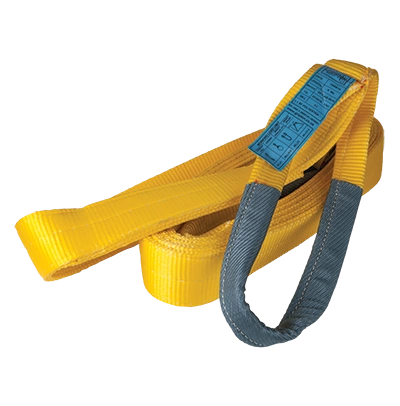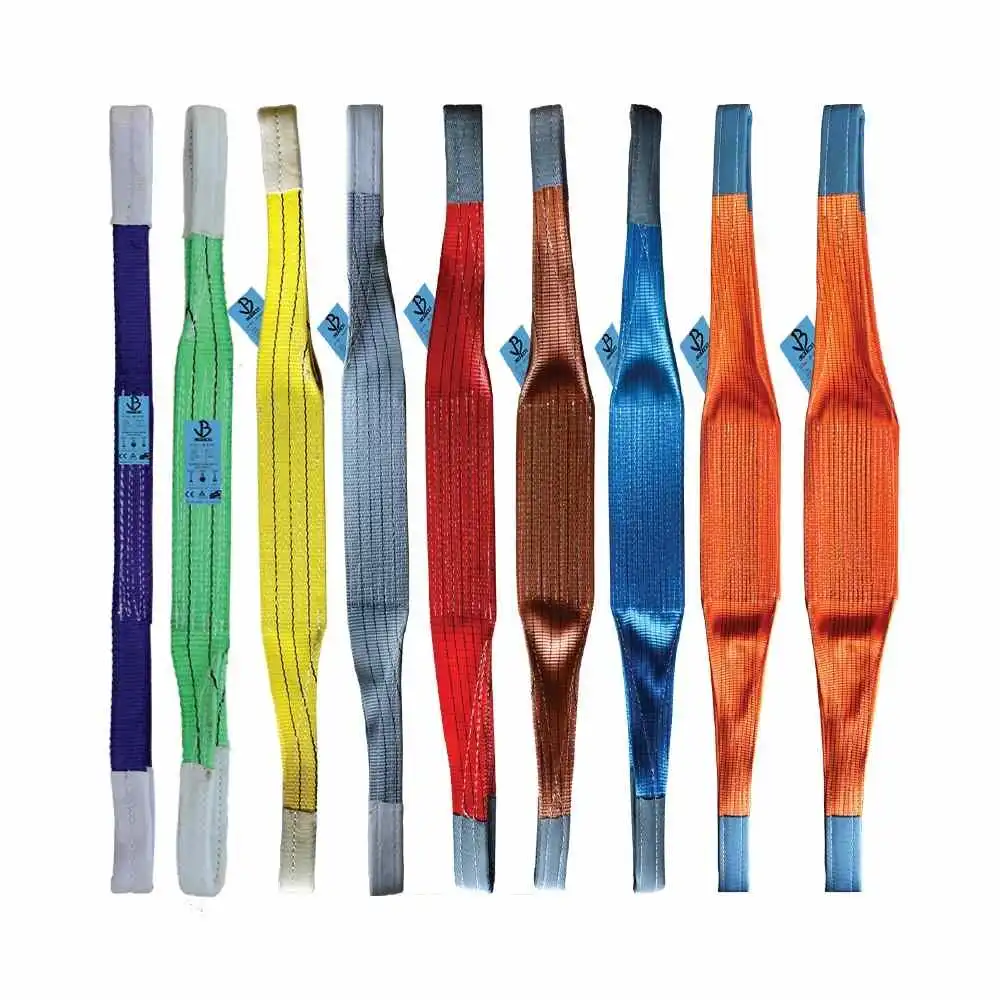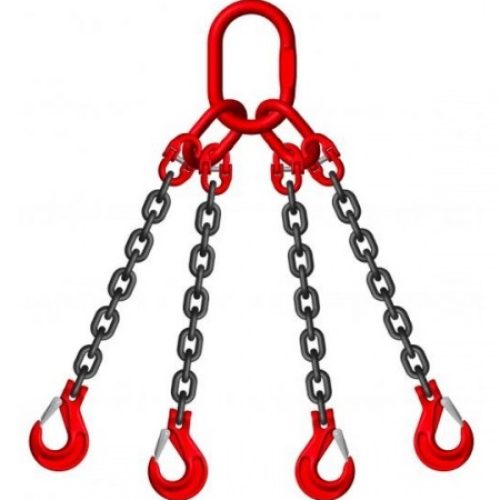What is a Webbing Sling?
A webbing sling is a flexible, strong, and lightweight lifting sling made from materials such as polyester or nylon. These slings are widely used in lifting and rigging operations due to their usefulness and ability to handle irregularly shaped loads.

Key Features of Webbing Slings:
- Lightweight & Easy to Handle: Much lighter than chain or wire rope slings, making ideal for manual handling.
- High Strength: Despite being light, they offer excellent lifting capacity.
- Flexible & Non-damaging: Perfect for lifting items with polished or soft surfaces as they won’t scratch or crush the load.
- Color-Coded: Each lifting capacity is represented by a different color for easy identification.
Safety Tips When Using Webbing Slings:
- Always check for cuts, or chemical damage before each use.
- Never exceed the Safe Working Load (SWL) marked on the sling tag.
- Avoid exposing slings to extreme heat or chemical.
- Store slings in a dry, clean place away from direct sunlight.

Common Applications:
- Lifting machinery or fragile items in workshops and construction sites
- Handling cargo and equipment in transport and logistics
- Marine and offshore operations
- Used in industries where sensitive surfaces require protection during lifting
Inspection:
Webbing sling inspection is essential to ensure safe lifting operations and prevent accidents. Inspect slings before each use for signs of wear, cuts, fraying, broken stitches, abrasions, burns, or chemical damage. Check the label for legibility and confirm the sling’s rated capacity. Pay attention to the end fittings and eyes for signs of distortion or damage. If a sling shows any defects or fails to meet inspection criteria, remove it from service immediately. Regular inspections, both visual and documented, should follow the manufacturer’s guidelines and industry standards. Conduct thorough periodic inspections based on usage frequency and environmental conditions to maintain lifting safety and compliance. Proper inspection ensures the sling remains reliable and fit for continued use.






